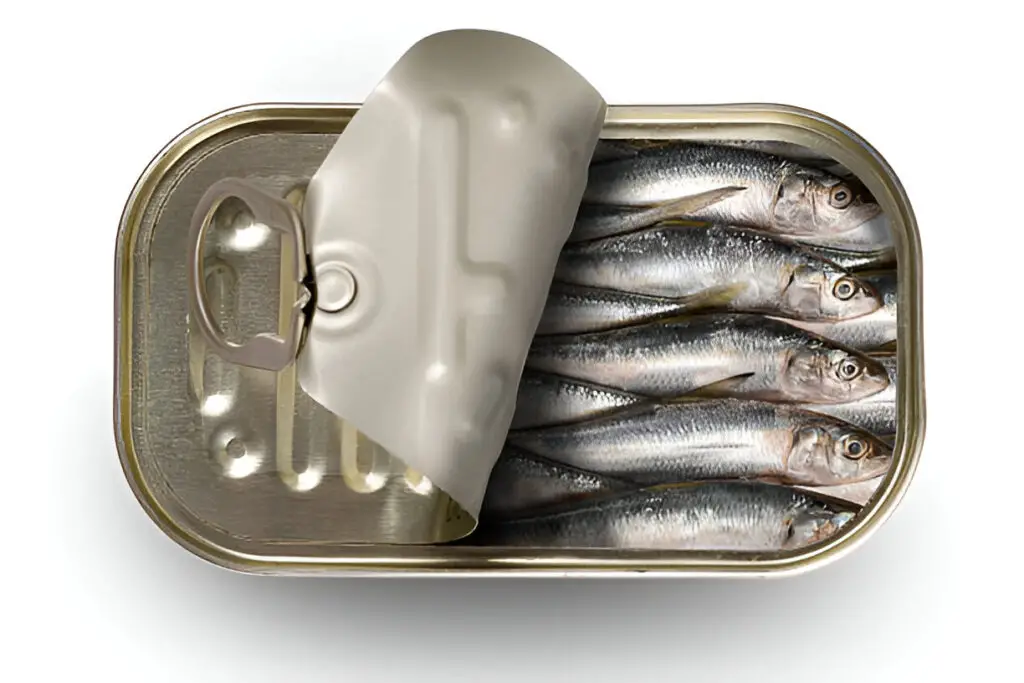Canned Sardines in Water: Are They Safe for Your Dog?

When it comes to feeding our furry companions, we all want to ensure that we’re giving them the best possible nutrition. As a proud dog parent, I’ve spent countless hours scouring the internet, searching for healthy treats that not only satisfy my pup’s taste buds but also pack a nutritional punch.
Recently, I stumbled upon the idea of canned sardines in water and wondered if they might be a suitable addition to my dog’s diet. After some thorough research, I can confidently share my findings about this little fish and how it can impact your dog’s health.
The Nutritional Value of Sardines
First things first, let’s dive into the nutritional treasure chest that sardines offer. Canned sardines are small, oily fish packed with an array of vitamins and minerals that can benefit your dog’s health. Here’s a quick snapshot of what these little fish bring to the table:
| Nutrient | Benefits for Dogs |
| Omega-3 Fatty Acids | Supports heart health, reduces inflammation |
| Protein | Builds muscle and supports overall growth |
| Vitamin B12 | Promotes healthy nerve function and energy |
| Calcium | Strengthens bones and teeth |
| Selenium | Boosts the immune system |
| Phosphorus | Supports healthy bones and teeth |
By including canned sardines in your dog’s diet, you’re essentially giving them a small serving of marine goodness that can contribute to their overall well-being. Omega-3 fatty acids, in particular, are like little superheroes for dogs, fighting off inflammation and promoting a shiny coat.
The Benefits of Canned Sardines in Water

So, why canned sardines in water, specifically? Well, for starters, canned sardines packed in water usually don’t contain any harmful additives or preservatives, making them a safer choice for your pup.
Unlike sardines in oil, which can add unnecessary calories and fat, the water-packed variety is a lighter option that still retains those valuable nutrients.
Easy to Digest
When I first introduced sardines to my dog, I was pleased to discover how easy they are to digest. The soft texture of these little fish makes them ideal for dogs of all ages, including seniors and those with sensitive stomachs. My dog, Max, absolutely gobbles them up as if they were gourmet treats. Watching him savor every bite reassured me that I made the right choice.
A Fun, Flavorful Treat
Let’s be honest; dogs can be picky eaters. I know from experience that finding a treat that excites my pup can sometimes feel like searching for a needle in a haystack. Sardines add a burst of flavor and a unique texture that gets tails wagging. Plus, their strong aroma can entice even the fussiest of dogs to indulge.
Introducing Sardines to Your Dog’s Diet
Before you start tossing sardines into your dog’s bowl like confetti at a parade, take a moment to consider how to introduce this new treat gradually. Here’s a simple step-by-step guide based on my own experience:
- Start Small: Begin with a tiny portion of canned sardines. A few bites are more than enough for a first try. I usually break one sardine into smaller pieces and mix it with Max’s regular food. This way, I can monitor how he reacts.
- Watch for Reactions: After serving sardines, keep an eye on your dog. Most dogs handle sardines well, but it’s essential to be vigilant for any signs of discomfort or allergies, such as vomiting or diarrhea. Fortunately, Max never had any issues, but being cautious is always wise.
- Gradually Increase Portion Size: If your dog enjoys sardines and shows no adverse reactions, you can gradually increase the serving size. I found that giving Max sardines once a week as a special treat worked well for us.
- Mix It Up: You can experiment with different ways to serve sardines. Try mashing them into a dog-friendly recipe, mixing them into homemade dog treats, or simply serving them straight from the can. I often add sardines to Max’s kibble, and it becomes an instant meal upgrade!
Are There Any Risks?
While canned sardines in water can be a healthy addition to your dog’s diet, it’s crucial to be aware of a few potential risks. Here are some key points to consider:
Salt Content
Some canned sardines can contain added salt, which can be harmful to dogs in large amounts. When selecting sardines, always opt for low-sodium or no-salt-added options. I make it a habit to read the labels before purchasing to ensure Max enjoys only the best.
Bone Hazard
Although sardines generally come with soft, edible bones that provide additional calcium, it’s still important to ensure your dog can chew them safely. I always supervise Max when he’s eating sardines, just to make sure he handles the bones well. Although most dogs do, some may struggle, so it’s best to be safe.
Moderation is Key
As with any treat, moderation is essential. Sardines should complement a balanced diet, not replace it. I like to treat Max to sardines once a week, ensuring he still gets a variety of nutrients from his regular dog food.
Comparing Canned Sardines to Other Fish Options
When it comes to choosing the best fish options for our furry friends, canned sardines stand out, but they’re not alone in the aquatic arena. Other fish like salmon and trout are safe for dogs and have their own benefits.
Here’s a comparison table that highlights the benefits, nutritional profiles, and cost considerations for canned sardines, salmon, and trout as fish options for dogs:
| Fish Type | Benefits | Nutritional Profile (per 100g) | Cost Considerations |
| Canned Sardines | – High in calcium (edible bones) | – Protein: 20g- Omega-3: 2,200mg- Calcium: 382mg | – Generally budget-friendly |
| – Rich in omega-3 fatty acids | – Vitamin B12: 8.9µg- Selenium: 52µg | – Good value for nutritional content | |
| Canned Salmon | – Promotes a shiny coat and healthy skin | – Protein: 22g- Omega-3: 2,200mg- Calcium: 20mg | – Often more expensive than sardines |
| – High in omega-3 fatty acids | – Vitamin B12: 4.9µg- Selenium: 40µg | – Premium brands can offer better quality | |
| Canned Trout | – Low in mercury, safe for regular consumption | – Protein: 20g- Omega-3: 1,500mg- Calcium: 40mg | – Mid-range price, good balance of quality |
| – Good source of protein | – Vitamin B12: 3.2µg- Selenium: 25µg | – Affordable option for pet owners |
This table provides a clear side-by-side comparison, helping you evaluate the best fish option for your dog based on benefits, nutritional content, and cost.
| Read: Are Expired Canned Sardines Safe to Eat? |
When to Consult Your Veterinarian
Before making significant changes to your dog’s diet, it’s always a good idea to consult your veterinarian. They can provide personalized recommendations based on your dog’s age, weight, and health status. When I first considered adding sardines to Max’s diet, I discussed it with our vet during a routine checkup. Their input helped me feel more confident in my decision.
If you notice any unusual behaviors or health issues after introducing sardines, reach out to your vet. It’s better to be proactive than reactive when it comes to our furry friends’ health.
Conclusion: A Fishy Treat Worth Trying
In conclusion, canned sardines in water can be a safe and nutritious treat for dogs, offering a range of health benefits that can support their overall well-being. From boosting heart health with omega-3 fatty acids to providing a tasty flavor that dogs love, sardines are a worthwhile addition to your pet’s diet.
As I continue to explore new ways to treat Max, I’m excited to keep incorporating sardines into his meals. Watching him thrive on a variety of foods, including these tiny fish, brings me joy. So, if you’re looking for a new way to add some pizzazz to your dog’s diet, give canned sardines a whirl. Your furry friend might just thank you with a happy wag of their tail!






